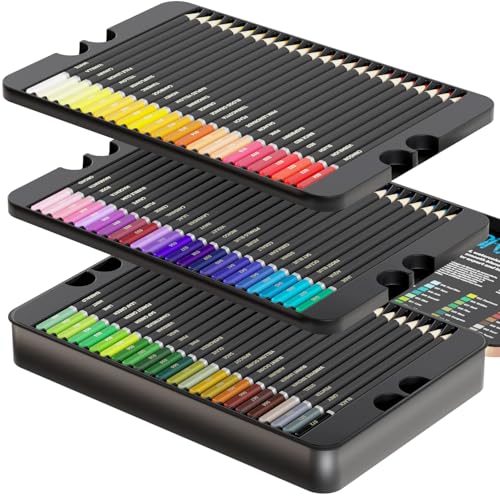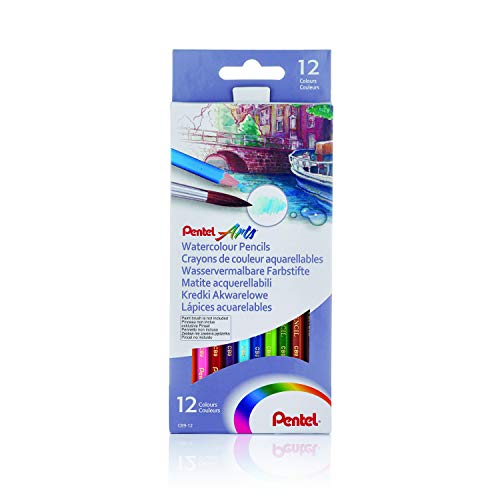Understanding Watercolour Pencils: What Are They and How Do They Work?
Introduction to Watercolour Pencils
Watercolour pencils are versatile art tools that combine the precision of traditional pencils with the fluidity of watercolours. They can be used dry like regular coloured pencils, allowing you to draw detailed lines and intricate patterns. Once you apply water, however, the pigments dissolve and blend beautifully, creating a smooth, watercolour effect. This makes them an ideal choice for artists who enjoy the controlled application of pencil work but want the aesthetic benefits of painting.
How They Create Effects
When using watercolour pencils, the magic happens when water meets pigment. You can colour your surface directly with the pencil and then use a wet brush to blend the pencil marks. Alternatively, you can wet the pencil tip and then draw with it—this method creates vibrant washes. The amount of water you apply affects the intensity of the colour. More water yields softer washes while less water results in more defined lines, giving you flexibility in your artwork.
Choosing the Right Set of Watercolour Pencils: Key Features to Consider
Quality of Pigments
One of the most important features to consider is the quality of the pigments used in the pencils. High-quality pigments provide richer colours and better lightfastness, meaning they will last longer without fading. Look for brands that are known for their vivid colour results and smooth application.
Number of Pencils in a Set
The number of pencils in a set can significantly impact your creative options. Smaller sets, typically around 12 pencils, are perfect for beginners, providing a good selection to learn with. As you grow in your skill and creativity, consider larger sets of 24 or even 48 pencils which offer a broader range of colours and shades.
Type of Pencils
Watercolour pencils come in varying degrees of hardness and softness. Softer pencils tend to produce richer colours and apply more smoothly, whereas harder pencils allow for greater control and precision. Depending on your style of work, you may want to consider a set that offers a good balance of both.
Techniques to Use with Watercolour Pencils: Tips for Beginners and Beyond
Basic Techniques for Beginners
As newcomers, you’ll want to start with foundational techniques. Dry techniques include layering colours to build depth; simply use different shades to create gradients in your drawings. Adding water can transform these layers into a cohesive watercolour effect. Experimenting with wet-on-dry (wet brush on dry pencil) can help achieve softer looks and controlled washes.
Advanced Techniques for Experienced Artists
For those comfortable with the basics, try techniques like wet-on-wet, where you apply water directly to your surface before adding pencil strokes. This allows for a much looser application and organic movement of colour. Additionally, incorporating techniques such as lifting (removing pigment with a wet brush) can create highlights and interesting light effects in your work.
Comparing Popular Brands: Which Watercolour Pencils Suit Your Style?
Brand Options to Consider
There are several reputable brands of watercolour pencils on the market, each offering unique characteristics. For example, one popular brand may focus on strong vibrant colours and buttery smooth application while another might emphasize eco-friendly materials and affordability. Some artists prefer premium brands for their artistic quality and durability, while others might find great satisfaction with mid-range options that balance price and performance.
Finding the Right Fit
Ultimately, the best choice depends on personal preferences related to colour intensity, texture, and price range. Consider trying out smaller sets from various brands to discover what works best for your artistic style before investing in larger collections.
Caring for Your Watercolour Pencils: Tips to Maximise Longevity and Performance
Proper Storage Techniques
To keep your watercolour pencils in optimal condition, proper storage is key. Store them upright in a container or pencil case that protects them from breaking, which commonly happens if they are jumbled together in a drawer. A case with individual slots is an excellent choice, providing both protection and easy access.
Regular Maintenance Tips
Sharpen your pencils regularly to maintain a fine point for detailed work. Make sure to use a sharpener designed for watercolour pencils; a good sharpener will ensure that the wood shavings do not get stuck in the blade. It’s also helpful to periodically clean your brushes and water containers, as residue can impact how the pigments dissolve and blend.


























